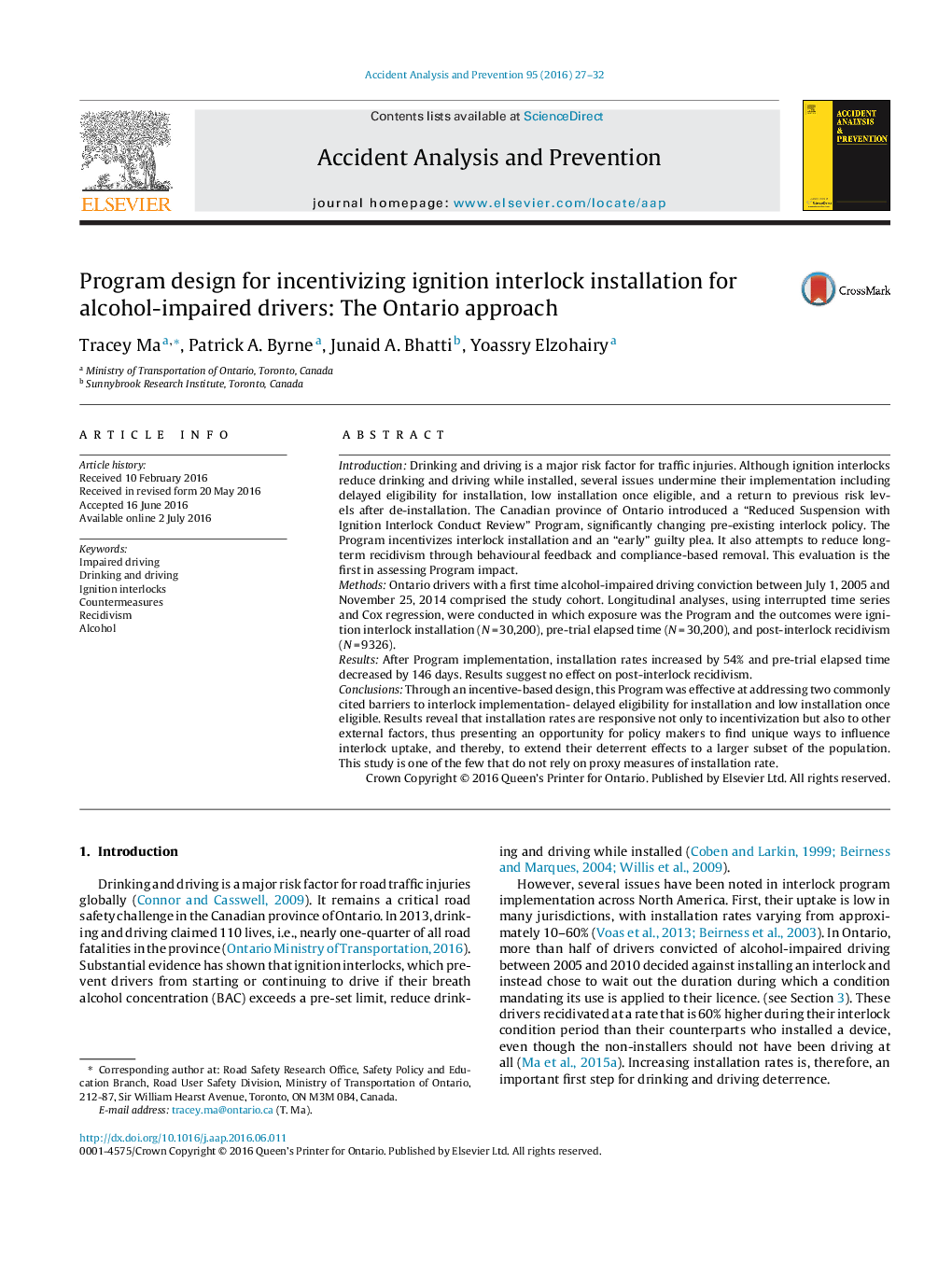| کد مقاله | کد نشریه | سال انتشار | مقاله انگلیسی | نسخه تمام متن |
|---|---|---|---|---|
| 571909 | 877327 | 2016 | 6 صفحه PDF | دانلود رایگان |
• Ignition interlocks reduce drinking and driving while installed. Several issues undermine their implementation including delayed eligibility for installation, low installation once eligible, and a return to previous risk levels after de-installation.
• The effectiveness of Ontario’s “Reduced Suspension with Ignition Interlock Conduct Review” Program in addressing the above issues was evaluated.
• Through an incentive-based program, installation rates increased by 54% and pre-trial elapsed time decreased by 146 days. Results suggest no effect on post-interlock recidivism.
• Results reveal that installation rates are responsive not only to incentivization but also to other external factors, thus presenting an opportunity for policy makers to find unique ways to influence interlock uptake, and thereby, to extend their deterrent effects to a larger subset of the population.
IntroductionDrinking and driving is a major risk factor for traffic injuries. Although ignition interlocks reduce drinking and driving while installed, several issues undermine their implementation including delayed eligibility for installation, low installation once eligible, and a return to previous risk levels after de-installation. The Canadian province of Ontario introduced a “Reduced Suspension with Ignition Interlock Conduct Review” Program, significantly changing pre-existing interlock policy. The Program incentivizes interlock installation and an “early” guilty plea. It also attempts to reduce long-term recidivism through behavioural feedback and compliance-based removal. This evaluation is the first in assessing Program impact.MethodsOntario drivers with a first time alcohol-impaired driving conviction between July 1, 2005 and November 25, 2014 comprised the study cohort. Longitudinal analyses, using interrupted time series and Cox regression, were conducted in which exposure was the Program and the outcomes were ignition interlock installation (N = 30,200), pre-trial elapsed time (N = 30,200), and post-interlock recidivism (N = 9326).ResultsAfter Program implementation, installation rates increased by 54% and pre-trial elapsed time decreased by 146 days. Results suggest no effect on post-interlock recidivism.ConclusionsThrough an incentive-based design, this Program was effective at addressing two commonly cited barriers to interlock implementation- delayed eligibility for installation and low installation once eligible. Results reveal that installation rates are responsive not only to incentivization but also to other external factors, thus presenting an opportunity for policy makers to find unique ways to influence interlock uptake, and thereby, to extend their deterrent effects to a larger subset of the population. This study is one of the few that do not rely on proxy measures of installation rate.
Journal: Accident Analysis & Prevention - Volume 95, Part A, October 2016, Pages 27–32
